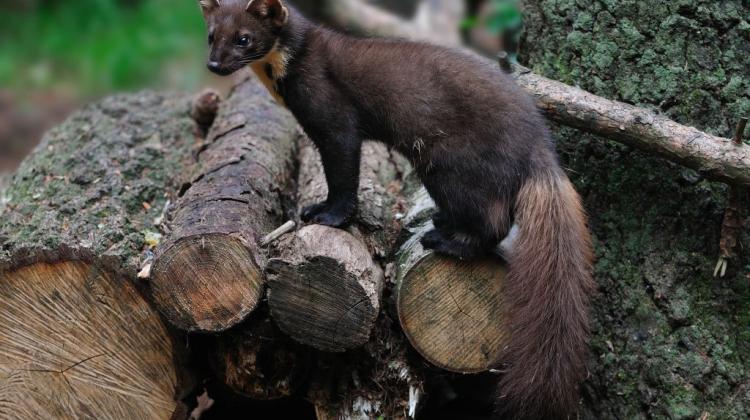Scientists: Elk from three genetic lines live in Europe
 Photo: Fotolia
Photo: Fotolia
Currently in Europe there are three different genetic lines of elk: Scandinavian, Polish-Belarusian and Eastern - shows the latest genetic research conducted by scientists from several European countries and the United States, led by Dr. Magdalena Niedziałkowska from the Mammal Research Institute PAS in Białowieża.
Scandinavian population lives in isolation from the others due to geographical conditions, while the remaining two mix with each other, although the Polish-Belarusian population is different, genetically distinct, and therefore should be protected - Dr. Niedziałkowska told PAP.
The study has been published in the prestigious scientific "Journal of Biogeography". Research was conducted in collaboration with Prof. Kris Hundertmark of the University of Alaska in Fairbanks, U.S., and scientists and naturalists from 9 countries of central, northern and eastern Europe.
The acquired knowledge may be useful in the context of emerging ideas, for example to allow elk hunting in some regions in Poland, or wildlife management planning - believes Niedziałkowska.
Elk in Poland are wild game, but hunting them is not allowed as they are protected by moratorium on hunting introduced in 2001 by the Minister of the Environment. In 2014, the minister contemplated the abolition of the moratorium, but after protests the idea was abandoned.
The researchers conducted the analysis of mitochondrial DNA (mtDNA) of 650 elks from 16 populations across Europe. "It has been demonstrated currently there are three genetic lines of elk in Europe: western, found almost exclusively in Scandinavia and Finland, central, whose range covers mainly Poland and Belarus, and eastern, found in the central and eastern part of the continent" - said Dr. Niedziałkowska. She pointed out that in mainland elk move freely over large distances, and the Scandinavian elk do not mix with others. The main natural obstacle is the Baltic Sea.
The researchers found that genetic lines of elk evolved during the last ice age - approx. 28 thousand years ago, and come from three areas where these animals lived: in the south-western Europe, in Central Europe - near the Carpathians, and in eastern and south-eastern Europe.
"After the retreat of the glacier, the elk increased the range of occurrence in Europe. European elk population began to decrease only in the last two thousand years" - said Niedziałkowska. Currently in Europe, the elk are almost non-existent west of Poland. Southern Europe is not their natural habitat now either, because they like cool climate.
"So far, all the data on the occurrence of this species within the maximum of the last glaciation (19 thousand - 27 thousand years ago), and shortly after, came from palaeontological materials. On this basis, it was determined that during the last glaciation the elk occurred in Apennine Peninsula, the Balkans and in the vicinity of the Carpathians. Presumably, however, the range of elk during this period could be much larger, because large areas of the east and south-east of Europe had suitable climatic and habitat conditions for many boreal species. Until now, however, there have been no genetic studies of elk covering the entire European range, which would allow to reconstruct the history of this species since the last ice age" - emphasised Niedziałkowska.
When the glacier retreated, elk colonized northern Europe, and individual genetic lines met in a very narrow contact zone, located at the junction of the borders of Norway, Sweden and Finland, and in the other - wider - in the central-eastern part of mainland Europe.
The study was funded by the Ministry of Science and Higher Education.
PAP - Science and Scholarship in Poland
kow/ mki/ mrt/
tr. RL
Przed dodaniem komentarza prosimy o zapoznanie z Regulaminem forum serwisu Nauka w Polsce.


















